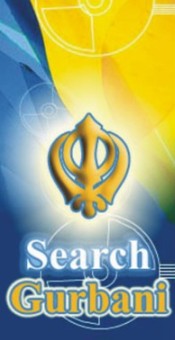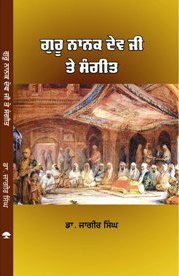Welcome To Amrit Kirtan Website
COMPILATION AND INSTALLATION OF SRI GURU GRANTH SAHIB
The compilation of Guru Granth Sahib had actually begun when Guru Nanak Dev, during his travels, undertook to collect the Bani (Hymns) of different Saints in his notebook called POTHI. That POTHI was passed on to the second Nanak GurU Angad Dev when Guruship was bestowed upon him. Guru Nank Dev had said –
“Whatever word I receive from the Lord – I pass it on in the same strain O Lord”
Thus the words of God have been put forth in Guru Granth Sahib.
Possibly the hymns of Bhagat Kabir and Bhagat Ravidas – in Uttar Pradesh, Bhagat Jaidev in Bengal, Bhagat Namdev in Maharashtra and that of Sheikh Baba Farid in Punjab were collected by Guru Nanak Dev. The Pothis of Baba Mohan – the son of 3rd Nanak Guru Amardas – which were also based on the Pothi of Guru Nanak Dev, were also a great source at the time of compilation of Guru Granth Sahib. Guru Arjan Dev himself collected those Pothis from Baba Mohan. It is also stated by some authors that some manuscripts were also prepared earlier under the personal supervision of Guru Amardas, the 3rd Guru.
The compilation of Bani of Guru Nanak Dev and the other like minded Saints was a very difficult task for Guru Arjan Dev because it was scattered far and wide. Several devotees of Guru Nanak Dev had actually preserved his Bani which the Guru had been reciting at different congregations at different places. In fact, a HUKAMNAMA (An Order) of Guru Arjan Dev was circulated to all the centres of the Sikhs, for the collection of the Bani of Guru Nanak Dev. Guru Nanak Dev and his successors had composed their hymns under the name of ‘Nanak’ and in order to differentiate the hymns of each Guru the serial number of the Guruship was mentioned with them adding the word ‘Mahla’ which connotes ‘the wife of Lord’. Accordingly Guru Arjan Dev collected all the material for the Granth Sahib which, as already said, came through many sources including the hymns of the Saints from their followers within the country. Many of the contemporary Saints of the time of Guru Arjan Dev, when came to know about the compilation of Granth Sahib, requested the Guru to include their hymns also in the Holy Granth but the Guru could not oblige most of them in view of different standards of their hymns. Actually all the Gurus, the Saints and the personages whose writings find place in the Holy Granth emphasise that union with the Absolute should be supreme object of man’s devotion and aspirations. The foremost consideration for the inclusion of the hymns of various personages was, in fact, the ideology of Guru Nanak Dev.
After compiling the material from different sources for Adi Granth, having engaged different persons like Santdas, Haria, Sukha, Mansu Ram etc., Guru Arjan Dev started the compilation of the final version of the Holy Granth and its editing, within the bounds of Gurdwara Ramsar in Amritsar, with the assistance of Bhai Gurdas. The compilation work had been finished in 1601 AD and for the next three years the work of editing was done and completed in 1604 AD. The script used was Gurmukhi (Punjabi). Guru Arjan Dev himself installed the Adi Granth (Sacred Granth) in Harimandir Sahib in 1604 AD. It contains 1430 pages. The contributors of hymns contained in the Holy Granth belonged to different Personages of different professions. Bhagat Jaidev was a Brahmin, Bhagat Pipa was a King, Bhagat Namdev was a Calico-Printer, Bhagat Trilochan was a Vaish, Bhagat Sadhna was a Butcher, Bhagat Dhanna was a farmer, Bhagat Sain was a barber, Bhagat Kabir was a weaver and Bhagat Ravidas was a cobbler. Subsequently the original copy of the Adi Granth went into the hands of Baba Dhirmal, the son of the 6th Nanak Guru Hargobind Sahib. The 2nd volume of the Adi Granth (Both were Handwritten), known as Bir of Bhai Bano, was not approved by Guru Arjan Dev as Bhai Bano had added some additional hymns in the 2nd volume of the Granth while the said Bir was taken by him to Lahore for binding. That unapproved Bir of the Granth is still with the descendents of Bhai Bano.
In 1706, Guru Gobind Singh, the 10th Guru of the Sikhs, incorporated the hymns of the 9th Nanak Guru Tegh Bahadur Sahib into the main Adi Granth (by dictating to Bhai Mani Singh) at Damdama Sahib – a place near Talwandi Sabo, where Guru Sahib had stayed for some time after leaving Anandpur Sahib and Chamkaur Sahib.
In 1708 Guru Gobind Singh conferred permanent Guruship on the Guru Granth Sahib. Presently it contains 5894 hymns, the largest number of hymns i.e. 2216 were contributed by Guru Arjan Dev; 937 hymns of 15 Saints/ Bhagats and 11 of other personages (Bhats and others) whose compositions tallied with the gospel of Guru Nanak.
Music forms the basis of the classification of all the hymns. The total number of Ragas i.e. 31 have been used in the Holy Granth.
The Holy Granth starts with the Bani of Guru Nanak namely JAPJI – in which Guru Nanak defined God and sums up His attributes as follows –
The goal of human life is for a union with the Divine Being popularly called as salvation or Nirvana which is achievable through surrender and submission to God’s Hukam (order).
Another Bani called Anand Sahib – the song of Bliss - contributed in the Holy Granth is the spiritual and musical masterpiece of Guru Amardas, the 3rd Guru. It is sung in the Ramkali Raga to make its impact on the mind.
The master piece Bani of Guru Arjan Dev, the 5th Guru called SUKHMANI SAHIB is the simplest and the most popular of all the Banis in the Holy Granth. Sukhmani gives peace of mind or the touchstone for happiness.
The 10th Master Guru Gobind Singh prepared the authentic edition of the Holy Granth to which he gave succession at the time of his death and the Guru is reported to have recited the following hymns (composed by him) at that time:
Agya Bhai Akal Ki Tabhi Chalayo Panth,
Sab Sikhan Ko Human Hai Guru
Manyo Granth. Guru Granth Ji Manyo
Pragat Guran Ki Deh, Jo Prabhu Ko
Milbo Chahe Khoj Shabad Mein Le.
(Under The Orders Of The Immortal Being, The Panth Was Created, All The Sikhs Are Enjoined To Accept The Granth As Their Guru, consider the Guru Granth as representing the Guru’s Body, Those Who Wish To Meet The Almighty can find Him In its Hymns).
Copies of Guru Granth Sahib were made and in due course, installed in the Dharamshalas. With the installation of Guru Granth Sahib in the Dharmshallas, the same became Gurdwaras (Abode of the Guru).
Guru Granth Sahib is a work of divine inspiration. According to many great scholars it is a scripture for all the mankind, the noble heritage of all mankind. It is, of course, not a book but its contents – the Gurshabad – is now the perpetual Guru of the Sikhs and shall remain ever so. In all the Gurudwaras (temples) the Guru Granth Sahib presides and holds the most prominent place.
Excerpted from the book "As Much As I Know" by S. Balbir Singh Walia, (Retd.) Deputy Secretary, Punjab Vidhan Sabha, Chandigarh.

